When German brewers developed the bock beer style in medieval Einbeck, they created more than just a strong lager—they established a brewing tradition that would influence beer culture for centuries. This robust beer style, characterized by its rich malt sweetness and noticeable alcohol warmth, represents one of Germany’s most significant contributions to the lager family.
Bock beers stand apart from lighter lagers through their intense malty character, higher alcohol content, and deep amber to dark brown appearance. Whether you’re encountering a traditional dunkles bock or exploring the stronger doppelbock variations, understanding this beer style opens the door to appreciating one of brewing’s most sophisticated traditions.
This comprehensive guide will explore everything from the historical origins in northern Germany to modern brewing techniques, helping you navigate the diverse bock family and discover why these beers have earned special recognition among beer enthusiasts worldwide.
What is Bock Beer Style?
Bock beer represents a strong German lager beer style distinguished by its robust character and higher alcohol content ranging from 6.3% to 14% ABV. Unlike lighter lagers that prioritize crispness and refreshment, bock style beers emphasize rich malty sweetness balanced by minimal hop bitterness, creating a warming, full-bodied drinking experience.
The fundamental characteristics that define bock beer include:
- Alcohol content: Significantly higher than standard lagers, typically starting at 6.3% ABV
- Color range: From golden amber in heller bock styles to dark brown and nearly black in traditional versions
- Fermentation: Brewed using bottom-fermenting lager yeast (Saccharomyces pastorianus)
- Malt profile: Dominated by Munich and Vienna malts providing toasted bread and caramel flavors
- Hop presence: Low to moderate bitterness (15-35 IBUs) that supports rather than competes with malt
- Body: Medium to full-bodied with smooth, creamy mouthfeel
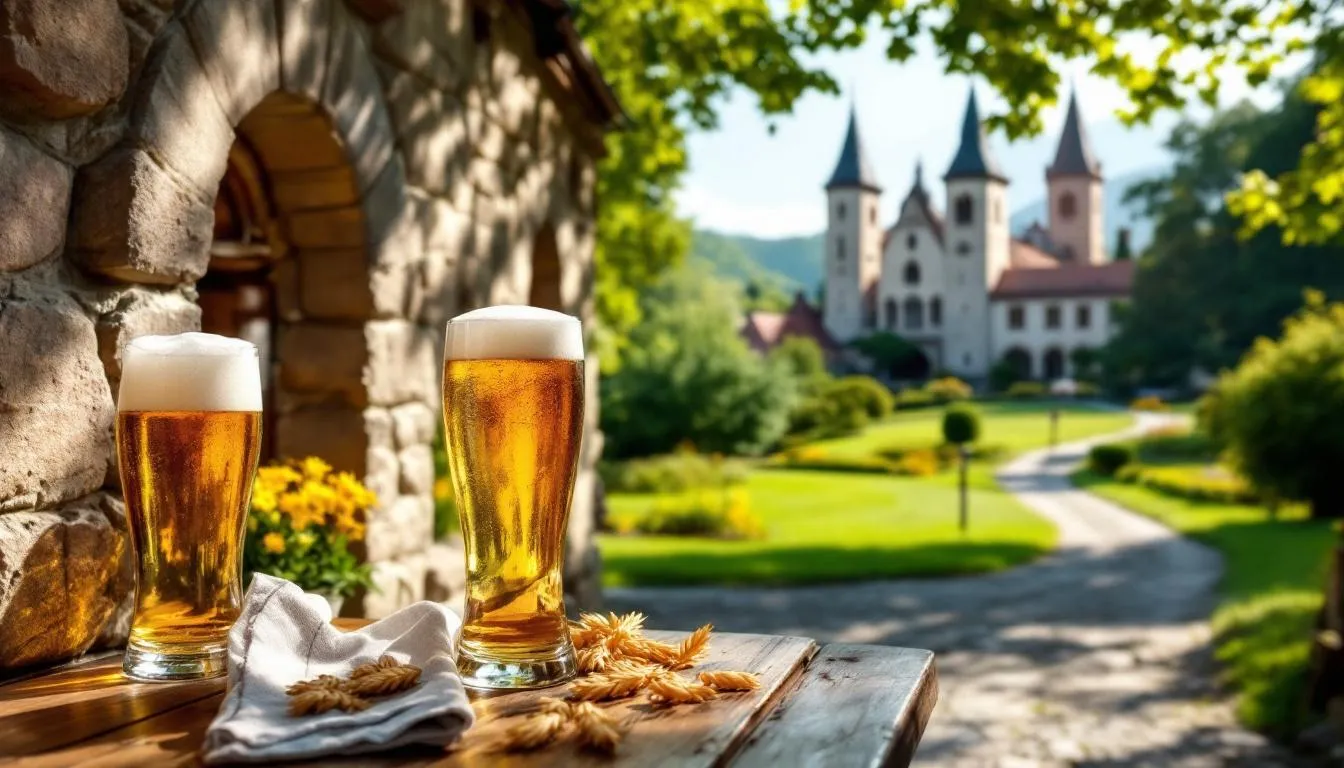
The brewing process involves extended cold lagering periods lasting several months, allowing the intense flavors to mellow and integrate. This patient maturation creates the smooth, well attenuated character that distinguishes quality bock beers from hastily produced alternatives.
Modern bock beer styles maintain these traditional characteristics while brewers experiment with barrel aging and specialty ingredients. However, the core identity remains unchanged: a malt-forward lager that provides substantial alcohol warmth and complex flavor development through careful brewing and aging. These flavor profiles also make bock beers excellent candidates for pairing beer with food, enhancing both the brew and dining experience.
History and Origins of Bock Beer
The bock beer story begins in Einbeck, a prosperous town in northern Germany during the 14th century. This medieval brewing center developed into a powerhouse of beer production, with local brewers creating strong, dark lagers that could withstand long journeys throughout the region.
The name “bock” evolved through fascinating linguistic changes. Originally called “Ainpöckisch Bier” (beer from Einbeck), the name gradually transformed through various German dialects. As the beer spread beyond its hometown borders, “Einbeck” became “ein bock,” eventually settling on simply “bock.” This linguistic evolution created an amusing coincidence—“bock” also means “billy goat” in German, explaining why many bock beer labels feature goat imagery.
The Hanseatic League Connection
Einbeck’s strategic position within the Hanseatic League, a powerful medieval trading confederation, enabled widespread distribution of their beer throughout northern Germany and beyond. The town’s brewers developed techniques for creating strong, stable beers that could survive lengthy transport routes without spoiling.
By the 15th century, Einbeck had become so renowned for beer production that other German cities began recruiting their master brewers. One pivotal moment occurred when Munich’s duke hired an Einbeck brewer to establish what would become the famous Hofbräuhaus brewery tradition.
Monastic Brewing Traditions
The development of bock beer intertwined significantly with monastery brewing practices. German monks discovered that these strong, malty beers served as ideal “liquid bread” during Lent and other fasting periods. The substantial alcohol content and rich malt sweetness provided necessary calories and nutrients when solid food consumption was restricted.
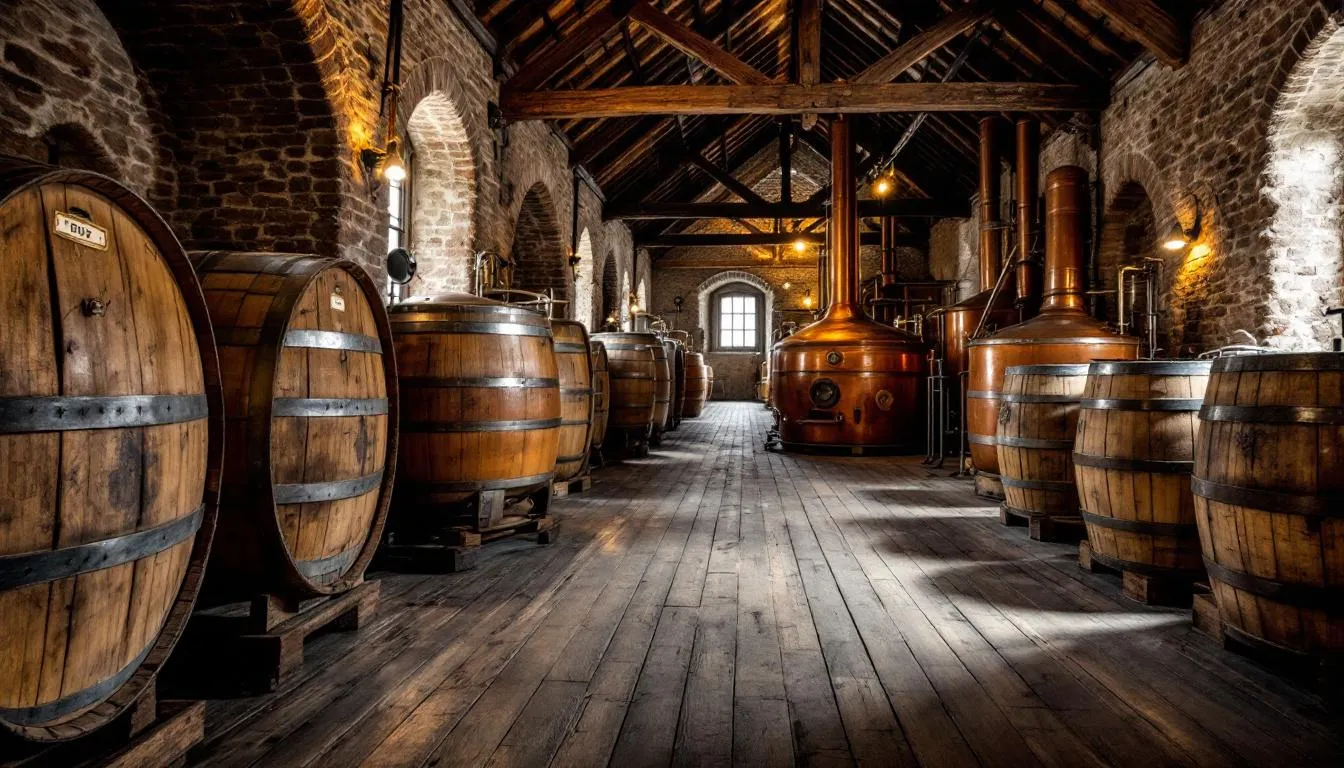
Monasteries became centers of bock beer innovation, particularly in developing what would later be known as doppelbock. These stronger versions, originally created for sustenance during extended fasting periods, established brewing traditions that continue today. The Paulaner brewery’s connection to monastery brewing exemplifies this heritage, with their Salvator doppelbock maintaining recipes rooted in centuries-old monastic practices.
Traditional Brewing Conditions
Medieval and early modern bock beer production relied heavily on natural cave systems and cellars for fermentation and aging. These underground spaces provided consistent cool temperatures essential for proper lager fermentation, allowing the slow development of complex flavors characteristic of traditional bock.
The seasonal nature of bock brewing emerged from practical necessity. Brewing typically occurred during cooler months when fermentation could be properly controlled, with the finished beer ready for consumption during winter and early spring when hearty, warming beverages were most appreciated.
Main Bock Beer Styles
The bock family encompasses several distinct substyles, each with unique characteristics developed for specific seasons and occasions. Understanding these variations helps appreciate the versatility and depth within the broader bock beer category.
Traditional Bock (Dunkles Bock)
Traditional bock, often called dunkles bock, represents the original style that emerged from Einbeck. These beers showcase the classic bock characteristics without the intensity of stronger variations or the lightness of spring versions.
Key Characteristics:
- ABV: 6.3-7.5%
- Color: Dark amber to brown (SRM 20-30)
- Flavor: Rich malt sweetness with toasted bread, biscuit, and caramel notes
- Hop bitterness: Low but noticeable, providing balance without dominating
- Body: Medium to full with smooth, slightly sweet finish
The malt profile typically features Munich malt as the foundation, often supplemented with Vienna malt for complexity. Small amounts of darker specialty grains may be added for color adjustment, but the focus remains on clean malt character rather than roasted flavors.
Traditional bock offers a perfect introduction to the style, providing substantial character without overwhelming intensity. The alcohol warmth becomes noticeable but never harsh, creating a warming sensation ideal for cooler weather consumption.
Maibock (Helles Bock)
Maibock, also known as heller bock, represents the lighter, more approachable side of the bock family. Specifically brewed for spring consumption—“Mai” means “May” in German—these beers bridge the gap between winter’s hearty bocks and summer’s lighter lagers.
Key Characteristics:
- ABV: 6.3-7.4%
- Color: Golden to light amber (SRM 6-11)
- Flavor: Balanced malt sweetness with more hop presence than traditional bock
- Hop character: Noticeable but complementary, often featuring noble hop varieties
- Finish: Drier compared to darker bock styles
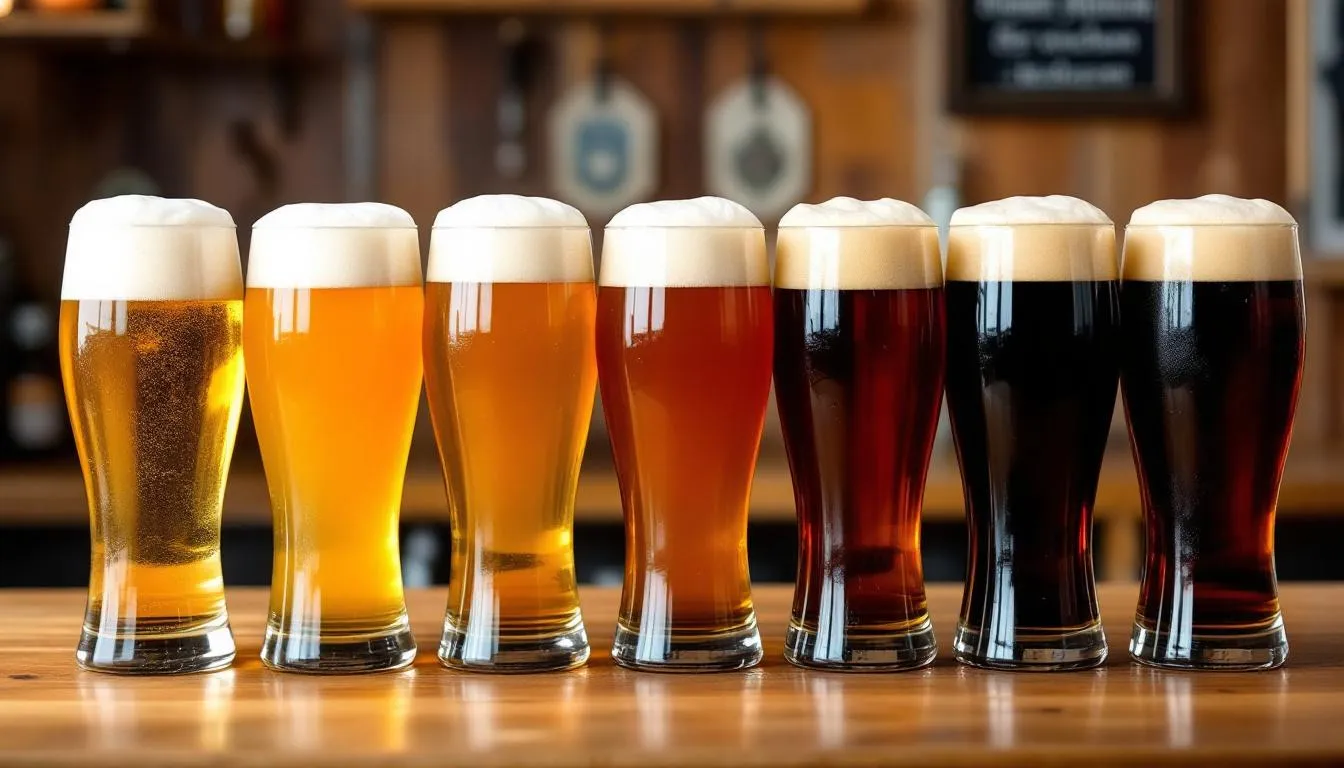
Maibock brewing emphasizes Pilsner and Munich malts, creating the lighter color while maintaining the strength and body expected from bock beer. The increased hop presence provides a refreshing quality that makes these beers suitable for warmer weather while retaining the substantial character of the bock family.
Notable examples include Hofbräu Maibock and Rogue Dead Guy Ale, which demonstrate the American interpretation of this traditionally German style.
Doppelbock
Doppelbock represents the most intense expression of traditional bock brewing, with “doppel” meaning “double” in German. These beers push alcohol content and malt intensity to impressive levels while maintaining the smooth, balanced character that defines quality bock beer.
Key Characteristics:
- ABV: 7-12% (sometimes higher)
- Color: Deep amber to dark brown (SRM 15-30+)
- Flavor: Intense malt complexity with dark bread, chocolate, and dried fruit notes
- Body: Full and rich with syrupy mouthfeel
- Naming tradition: Names traditionally end in “-ator” (Celebrator, Salvator, Animator)
The “-ator” naming convention originated with Paulaner’s Salvator, the first commercial doppelbock. Other brewers adopted this suffix as a tribute to the original, creating memorable names that instantly identify doppelbock styles.
Doppelbock brewing requires exceptional skill in managing high-gravity worts and extended lagering periods. The intense malt sweetness must be balanced carefully to avoid cloying character, while the high alcohol content needs proper integration to prevent harsh warming sensations.
Weizenbock
Weizenbock combines the strength and intensity of bock beer with the distinctive character of German wheat beer. This hybrid style requires at least 50% wheat malt in the grain bill, creating unique flavor combinations not found in traditional all-barley bocks.
Key Characteristics:
- ABV: 6.5-9%
- Color: Dark amber to dark brown with cloudy appearance
- Flavor: Bock malt richness combined with wheat beer’s fruity, spicy yeast character
- Yeast notes: Banana, clove, and vanilla from wheat beer yeast strains
- Body: Full and creamy with wheat’s characteristic smoothness
The brewing process presents unique challenges, as wheat beer yeast must be managed carefully at higher gravities typical of bock styles. The resulting beers offer complexity unavailable in either pure bock or wheat beer styles, with fruity notes complementing rather than competing with malt sweetness.
Schneider’s Aventinus stands as the classic example of weizenbock, demonstrating how wheat and bock characteristics can integrate harmoniously.
Eisbock
Eisbock represents the most extreme expression of bock brewing, achieving alcohol levels through freeze-concentration rather than traditional fermentation alone. This specialty style originates from the Franconia region of Germany, where cold winters enabled the development of this unique technique.
Key Characteristics:
- ABV: 9-14% (achieved through ice removal)
- Color: Dark copper to black
- Flavor: Intensely malty with wine-like complexity, fruity notes, and rich sweetness
- Body: Syrupy and viscous with noticeable alcohol warmth
- Production: Limited quantities due to labor-intensive process
The eisbock process involves partially freezing finished doppelbock and removing ice crystals, concentrating both alcohol and flavors. This technique creates beers of remarkable intensity that blur the line between beer and fortified beverages.
Schneider Aventinus Weizen-Eisbock exemplifies this rare style, combining weizenbock complexity with eisbock concentration techniques.
Flavor Profile and Tasting Notes
Understanding the sensory characteristics of bock beer requires appreciation for how malt sweetness, alcohol warmth, and subtle hop character interact to create complex yet balanced flavors. The bock family offers a masterclass in malt-forward brewing, where every element supports the central theme of rich, warming satisfaction.
Dominant Malt Character
The foundation of any quality bock beer lies in its malt profile, which provides the primary flavors and aromas that define the style. Munich malt, the cornerstone of most bock recipes, contributes deep bread crust and biscuit flavors that form the backbone of the beer’s character.
Primary malt flavors include:
- Toasted bread crust and fresh-baked biscuits
- Caramel and toffee sweetness
- Hints of chocolate in darker versions
- Nutty, grain-forward richness
- Light honey or molasses notes in stronger styles
Vienna malt often supplements Munich malt, adding golden-orange hues and contributing subtle vanilla and toasted grain complexity. The interplay between these base malts creates the characteristic “malty” flavor that beer enthusiasts associate with quality bock beer.
Balanced Hop Presence
While malt dominates the flavor profile, hop bitterness plays a crucial supporting role in preventing excessive sweetness. Noble hop varieties—Hallertau, Tettnang, and Spalt—provide clean bitterness without intrusive flavors that would compete with malt complexity.
The hop profile in bock beer typically features:
- Low to moderate bitterness (15-35 IBUs)
- Minimal hop aroma or flavor
- Clean, crisp bitterness that balances malt sweetness
- Absence of citrusy or piney hop character found in other styles
This restrained hop presence allows the malt to shine while preventing the beer from becoming overly sweet or cloying, particularly important in higher-alcohol versions where residual sugars can accumulate.
Alcohol Integration
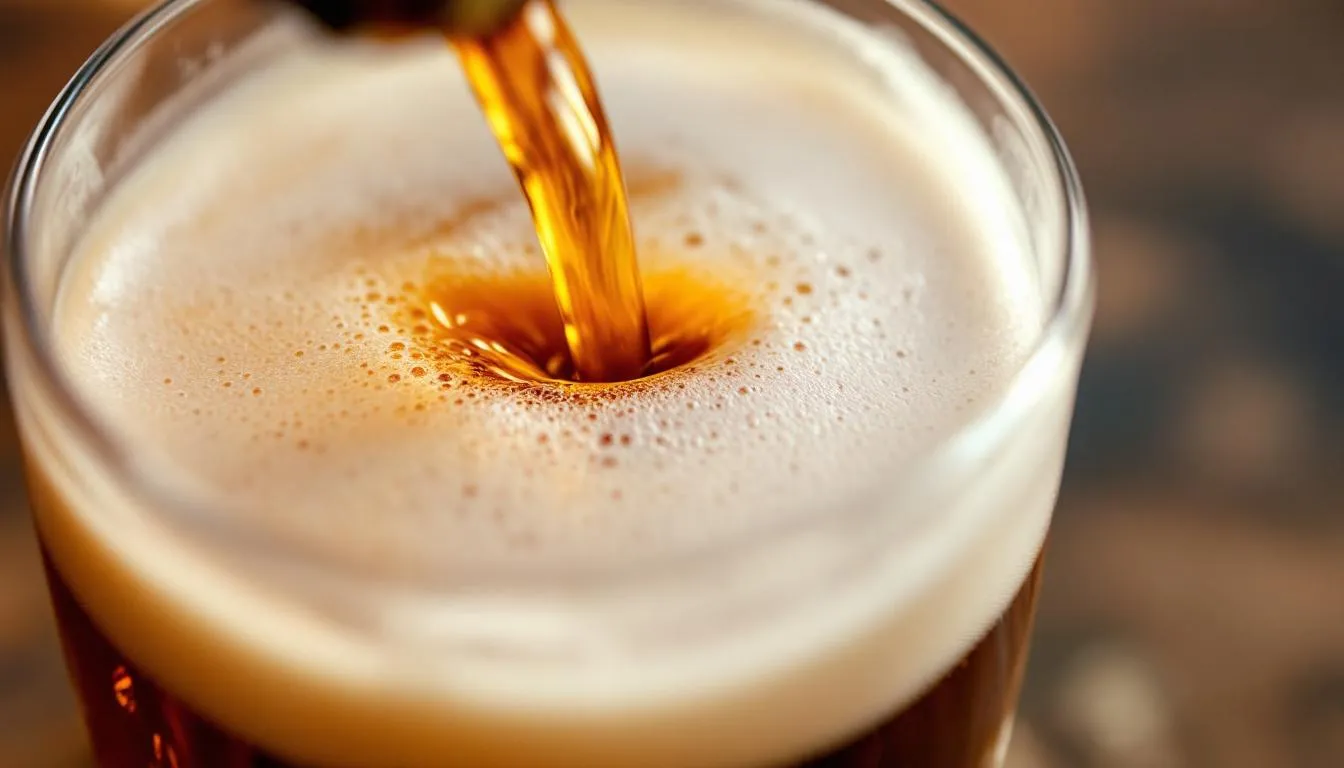
The alcohol warmth in bock beer should enhance rather than dominate the drinking experience. Well-brewed bocks integrate alcohol smoothly, providing a gentle warming sensation that complements the malt richness without creating harsh or hot flavors.
Alcohol characteristics vary by substyle:
- Traditional bock: Gentle warmth that becomes noticeable but never aggressive
- Maibock: More restrained alcohol presence, focusing on drinkability
- Doppelbock: Significant warmth that adds to the beer’s substantial character
- Eisbock: Intense alcohol presence that requires careful sipping and appreciation
Clean Fermentation Character
The use of bottom-fermenting lager yeast ensures that bock beers maintain clean flavor profiles without the fruity esters or spicy phenols found in ales. This clean fermentation character allows the malt and hop interplay to take center stage without competing flavors from yeast byproducts.
Quality bock beers exhibit:
- Absence of diacetyl (buttery flavors)
- Minimal fruity esters
- Clean, crisp finish despite substantial body
- Well attenuated character that avoids excessive sweetness
Seasonal Flavor Expectations
Different bock styles offer flavors suited to their traditional consumption seasons:
Winter bocks (traditional and doppelbock) emphasize warming, comforting flavors like dark bread, caramel, and chocolate that complement cold weather and hearty foods.
Spring bocks (maibock) feature brighter, more balanced flavors with increased hop presence and drier finish that transitions drinkers from winter’s heavy beers toward summer’s lighter options.
Brewing Process and Techniques
The creation of exceptional bock beer requires mastery of traditional lager brewing techniques combined with specific processes that develop the style’s characteristic depth and smoothness. From grain selection through extended lagering, each step contributes to the final beer’s quality and authenticity.
Grain Bill and Malt Selection
Traditional bock brewing relies heavily on German malt varieties, particularly Munich malt, which provides the foundation for the style’s characteristic bread-like flavors and rich amber to brown color. Quality bock beers typically feature:
Base malt composition:
- Munich malt (50-80% of grain bill)
- Vienna malt (10-30% for color and flavor complexity)
- Pilsner malt (occasionally for balance in lighter styles)
Specialty grains (used sparingly):
- Caramel/Crystal malts (20-60L) for color adjustment
- Chocolate malt (small amounts for color in darker versions)
- Carafa or other debittered dark malts for color without harshness
The all-malt tradition of bock brewing means avoiding adjuncts like corn or rice, which would dilute the rich malt character essential to the style. This commitment to quality ingredients distinguishes authentic bock beer from mass-produced alternatives.
Mashing Techniques
Many traditional bock brewers employ decoction mashing, a time-intensive process that enhances malt character and creates the deep, complex flavors associated with the finest examples of the style. This technique involves removing portions of the mash, boiling them separately, and returning them to the main mash.
Decoction benefits include:
- Enhanced malt depth and complexity
- Improved color development
- Better protein coagulation for clearer beer
- Traditional character appreciated by purists
Single or double decoction programs work well for bock brewing, though modern infusion mashing can produce excellent results when combined with quality ingredients and proper technique.
Fermentation Management
Bottom-fermenting lager yeast strains specifically selected for bock brewing must handle higher alcohol levels while maintaining clean flavor profiles. Popular strains include:
- Wyeast 2124 (Bohemian Lager): Clean, malt-accentuating character
- White Labs WLP830 (German Lager): Traditional German profile
- Saflager W-34/70: Reliable dry yeast option
Fermentation typically occurs at cooler temperatures (45-55°F) over extended periods to prevent stress that could create off-flavors. The higher gravity of bock worts requires careful yeast management to ensure complete attenuation.
Extended Lagering
The lagering process defines much of bock beer’s character, with extended cold conditioning periods essential for developing smoothness and allowing flavors to integrate properly. Traditional lagering involves:
Lagering parameters: See more about how alcohol is made.
- Temperature: 32-40°F
- Duration: 2-6 months minimum
- Gradual temperature reduction over time
- Periodic sampling to monitor development
During lagering, harsh flavors mellow, alcohol integrates smoothly, and the beer develops the characteristic smooth mouthfeel that distinguishes quality bock from rushed alternatives. Patience during this phase separates authentic bock beer from commercial imitations.
Modern Brewing Innovations
Contemporary brewers maintain traditional bock character while incorporating modern techniques for consistency and quality:
Quality improvements:
- Precise temperature control for consistent results
- Laboratory-quality yeast management
- Advanced water treatment for optimal mineral profiles
- Careful oxygen management throughout the process
Some craft brewers experiment with barrel aging, adding subtle oak, vanilla, and coconut notes that complement rather than overwhelm the traditional malt character. These innovations respect the style’s heritage while exploring new dimensions of flavor complexity.
Seasonal Traditions and Cultural Significance
Bock beer occupies a special place in German beer culture, with consumption patterns and traditions deeply rooted in seasonal celebrations and cultural practices that span centuries. Understanding these traditions enhances appreciation for the style beyond mere flavor characteristics.
Traditional Brewing Seasons
The seasonal nature of bock beer production originated from practical brewing considerations but evolved into cultural traditions that persist today. Traditional bock brewing followed specific seasonal patterns:
Autumn brewing (September-November) utilized cooler temperatures for proper fermentation, with beers ready for winter consumption. This timing allowed brewers to take advantage of harvest-fresh grains while ensuring proper lagering before peak consumption periods.
Winter consumption (December-March) featured traditional and doppelbock styles as warming beverages during Germany’s coldest months. These stronger, maltier beers provided comfort and calories during harsh winter conditions.
Spring celebrations (April-May) introduced maibock as a transitional style, celebrating the end of winter with slightly lighter but still substantial beers that marked the change of seasons.
Festival Traditions and Celebrations
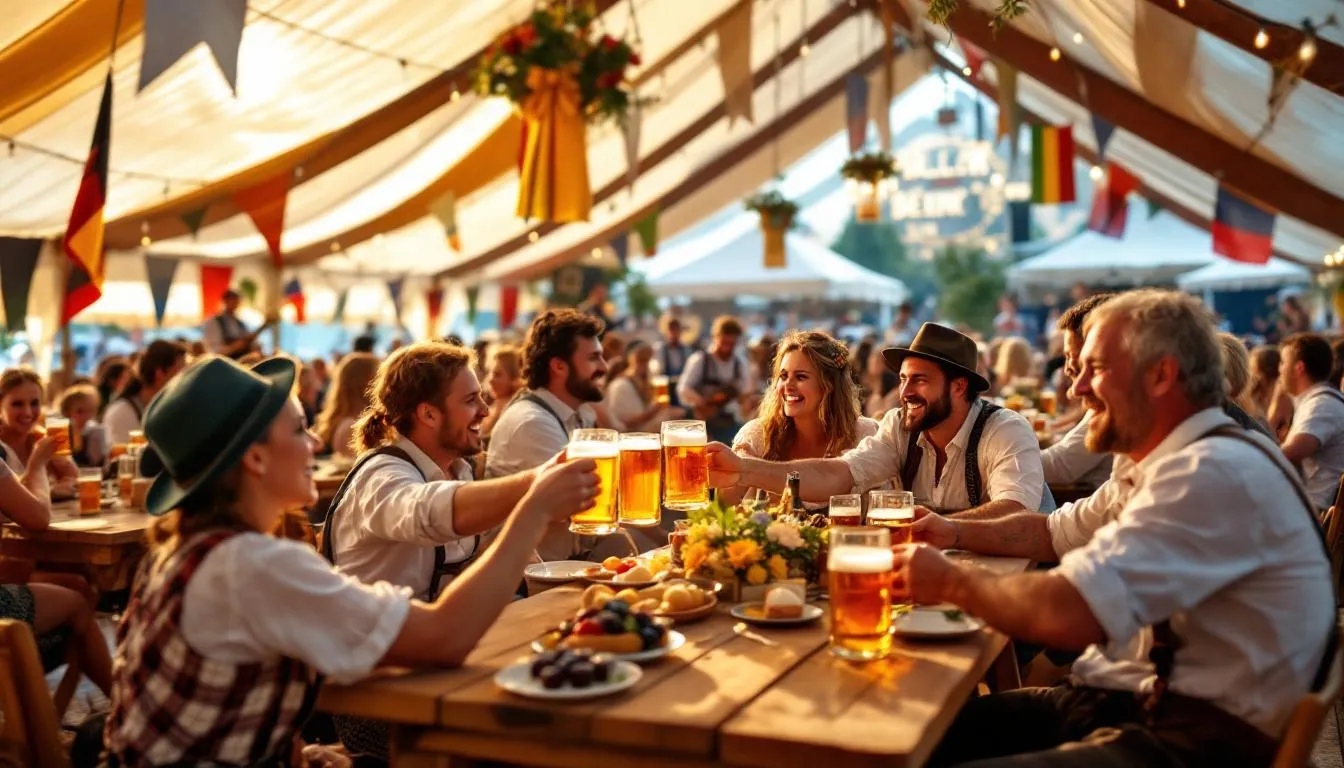
German beer festivals prominently feature bock beers during appropriate seasons, with specific events dedicated to celebrating these robust lagers:
Oktoberfest connections: While primarily known for märzen and fest beers, Oktoberfest celebrations often include bock varieties, particularly during opening ceremonies and special occasions within the festival.
Winter markets and celebrations: Christmas markets throughout Germany feature traditional bock beers as warming beverages, often served alongside hearty foods that complement the beers’ rich character.
Amsterdam Bockbierfestival: Since 1978, this international celebration has promoted bock beer appreciation beyond Germany’s borders, featuring examples from breweries worldwide while maintaining focus on traditional styles.
Religious and Monastic Connections
The relationship between bock beer and German monasteries created lasting cultural associations that influence modern perceptions of the style:
Lenten traditions: Monks consumed doppelbock as liquid bread during fasting periods, establishing the style’s reputation for providing sustenance. This practice created the cultural perception of bock beer as nourishing and substantial rather than merely recreational.
Spiritual brewing heritage: Monastery brewing traditions emphasized quality, patience, and respect for ingredients—values that continue to influence modern bock beer production and appreciation.
Contemporary monastery brewing: Several German monasteries continue brewing traditions, maintaining authentic connections between bock beer and its spiritual heritage.
Symbolic Significance
The billy goat imagery associated with bock beer extends beyond linguistic coincidence to represent strength, persistence, and traditional values:
Goat symbolism: The billy goat represents virility, strength, and stubbornness—qualities associated with bock beer’s robust character and traditional brewing methods that resist modernization.
Regional pride: Bock beer serves as a symbol of German brewing excellence and cultural heritage, representing the country’s contribution to world beer culture.
Craftsmanship values: The time-intensive nature of bock brewing symbolizes traditional craftsmanship and patience in an increasingly fast-paced world.
Modern Cultural Adaptations
Contemporary beer culture has adapted bock traditions while maintaining respect for historical significance:
Craft brewery interpretations: American and international breweries create bock variations that honor traditional techniques while incorporating local ingredients and preferences.
Seasonal menu integration: Restaurants and beer bars use bock seasonality to create special menus and events that educate consumers about traditional German beer culture.
Educational opportunities: Beer festivals and brewing schools use bock beer as examples of traditional lager techniques and cultural significance in brewing education.
Food Pairing Recommendations
The rich, malty character and substantial body of bock beer create exceptional pairing opportunities with foods that complement rather than compete with the beer’s complex flavors. Understanding these combinations enhances both the beer and food experience.
Cheese Pairings
Bock beer’s malty sweetness and alcohol warmth pair exceptionally well with various cheese styles, creating combinations that highlight both elements:
Aged hard cheeses work particularly well with traditional bock and doppelbock styles:
- Aged cheddar: The sharp, nutty flavors complement malt richness while the cheese’s firmness contrasts with the beer’s smooth body
- Gouda: Natural caramel notes in aged gouda echo the beer’s malt sweetness, creating harmonious flavor development
- Gruyère: The cheese’s complex, slightly sweet character matches bock beer’s sophistication
Fresh and soft cheeses pair beautifully with lighter maibock styles:
- Fresh chèvre: The tangy, creamy texture provides pleasant contrast to malt sweetness
- Brie: Rich, buttery flavors complement the beer without overwhelming more delicate hop presence
- Camembert: Earthy, mushroom notes add complexity while maintaining flavor balance
Meat and Main Courses
The substantial character of bock beer makes it ideal for pairing with rich, flavorful meat dishes:
Grilled and roasted meats benefit from bock beer’s ability to cut through rich flavors:
- Pork dishes: Traditional German pork preparations like schweinshaxe (pork knuckle) create classic pairings that celebrate both beer and food traditions
- Beef roasts: The beer’s malty richness complements beef’s savory character while alcohol warmth enhances the meat’s richness
- Game meats: Venison and wild boar pair excellently with darker bock styles, where robust flavors match the meat’s intensity
German cuisine offers natural pairing opportunities rooted in cultural tradition:
- Bratwurst and sausages: The beer’s malt sweetness balances salty, spiced sausage flavors
- Sauerbraten: The beer’s richness complements this traditional pot roast’s complex flavors
- Schnitzel: Crispy textures contrast beautifully with the beer’s smooth body
Dessert Combinations
Stronger bock styles, particularly doppelbock and eisbock, pair surprisingly well with desserts:
Chocolate desserts create exceptional combinations with darker bock styles:
- Dark chocolate: The beer’s malt complexity complements chocolate’s richness without excessive sweetness
- Tiramisu: Coffee and cream flavors in tiramisu echo doppelbock’s complex character
- Chocolate torte: Dense, rich desserts match the beer’s substantial body
Caramel and toffee desserts highlight shared flavor notes:
- Crème brûlée: Caramelized sugar echoes malt sweetness while cream provides textural contrast
- Bread pudding: Shared bread flavors create harmony while dessert sweetness balances hop bitterness
- Pecan pie: Nutty, sweet flavors complement malt richness in stronger bock styles
Serving Considerations
Proper serving enhances both bock beer and food pairing experiences:
Temperature: Serve bock beer at 45-50°F to showcase malt complexity without excessive coldness that would mute flavors. This temperature range also complements most food pairings effectively.
Glassware: Traditional German beer glasses or tulip-shaped vessels concentrate aromas while providing appropriate serving sizes for higher-alcohol styles.
Timing: Stronger bock styles work well as digestifs, while lighter maibock can accompany meals throughout dining experiences.
Notable Bock Beer Examples
Exploring exceptional examples of bock beer provides practical insight into how different breweries interpret traditional styles while maintaining authenticity and quality. These selections represent both classic German producers and innovative craft breweries worldwide.
Classic German Examples
Augustiner Maximator Doppelbock represents traditional Munich brewing excellence with rich, malty complexity that showcases centuries of brewing expertise. This doppelbock features deep amber color with chocolate and dark fruit notes that exemplify the style’s potential for sophistication.
Ayinger Celebrator Doppelbock offers international recognition for German brewing quality, featuring the traditional “-ator” naming convention while delivering exceptional balance between malt sweetness and alcohol integration. The brewery’s commitment to traditional techniques produces consistently excellent results.
Spaten Optimator demonstrates large-scale German brewing that maintains traditional character despite commercial production. This widely available doppelbock provides accessible introduction to the style while representing authentic German brewing heritage.
Hofbräu Maibock exemplifies the heller bock style with golden color and balanced character that bridges winter’s heavy beers and summer’s lighter offerings. The brewery’s connection to Munich’s royal brewing tradition adds historical significance to exceptional beer quality.
American Craft Interpretations
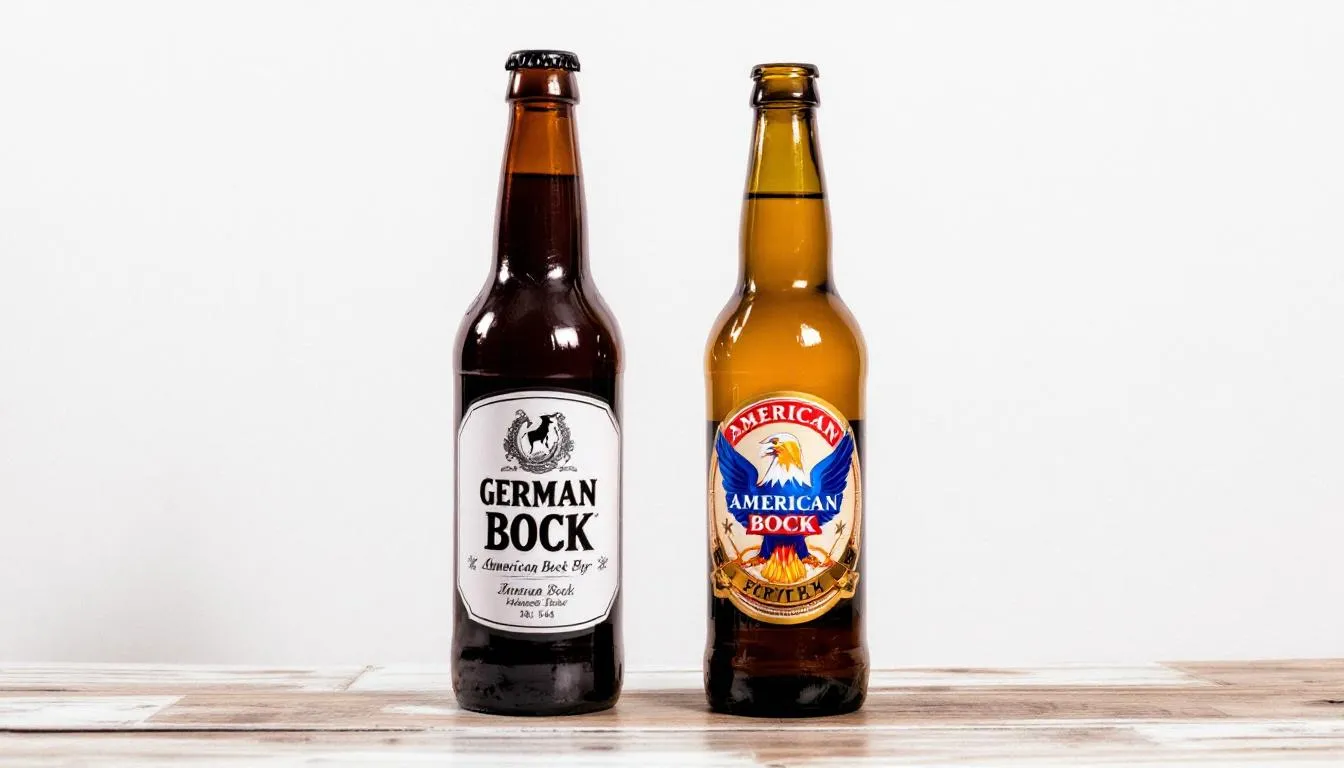
Samuel Adams Double Bock represents American craft brewing’s respectful interpretation of German traditions, featuring domestic ingredients while maintaining authentic character. The beer demonstrates how American brewers can honor traditional styles while incorporating local preferences.
Great Lakes Rockefeller Bock showcases regional American brewing excellence with careful attention to traditional techniques. The brewery’s commitment to lager styles produces bock beer that competes favorably with German examples.
Shiner Bock, while technically a dark lager rather than traditional bock, introduced many American beer drinkers to stronger, maltier styles. Despite stylistic liberties, it serves as a gateway beer that encourages exploration of authentic bock styles.
New Glarus Uff-da Bock demonstrates small-brewery excellence in traditional German styles, with Wisconsin’s brewing heritage informing respectful interpretation of bock beer traditions.
Specialty and Innovation Examples
Schneider Aventinus Weizen-Eisbock pushes style boundaries while maintaining exceptional quality, combining wheat beer character with eisbock concentration techniques. This unique beer demonstrates how tradition can inform innovation without compromising authenticity.
Paulaner Salvator holds special significance as the original doppelbock that inspired the “-ator” naming tradition. The brewery’s monastic heritage and continued excellence make this beer essential for understanding doppelbock history and quality.
Rogue Dead Guy Ale represents American interpretation of maibock with distinctive character that honors traditional techniques while incorporating Pacific Northwest brewing influences.
Evaluating Quality Examples
When exploring bock beer examples, consider these quality indicators:
Malt character: Exceptional bocks showcase complex malt flavors without excessive sweetness or one-dimensional character. Look for bread, caramel, and toasted grain notes that integrate smoothly.
Alcohol integration: Quality examples provide warming alcohol presence without harsh or hot flavors that indicate poor fermentation or insufficient lagering.
Balance: Despite malt-forward character, excellent bocks maintain balance through appropriate hop bitterness and clean fermentation character.
Authenticity: Respect for traditional techniques and ingredients distinguishes quality interpretations from commercial imitations that prioritize cost over character.
Consistency: Reliable producers maintain quality across batches, indicating proper brewing procedures and quality control measures.
Availability and Accessibility
German imports: Many traditional German bock beers are available internationally, though quality can vary based on shipping and storage conditions. Seek retailers with proper beer handling practices.
Domestic craft options: American craft breweries increasingly produce quality bock interpretations, often with better freshness than imported alternatives.
Seasonal availability: Many bock beers follow traditional seasonal patterns, with winter releases for traditional styles and spring availability for maibock varieties.
Understanding these examples provides foundation for appreciating bock beer quality while encouraging exploration of both traditional German producers and innovative craft interpretations that honor the style’s heritage.
Conclusion
The bock beer style represents one of brewing’s most sophisticated achievements, combining centuries of German tradition with technical excellence that continues to challenge and inspire brewers worldwide. From its medieval origins in Einbeck to modern craft brewery interpretations, this robust lager family demonstrates how traditional techniques and patient craftsmanship create beers of exceptional character and complexity.
Understanding the diversity within the bock family—from approachable maibock to intense eisbock—reveals the style’s remarkable versatility and depth. Each substyle serves specific purposes and occasions, whether providing winter warmth through rich doppelbock or celebrating spring’s arrival with balanced heller bock. The cultural significance embedded in these beer styles extends far beyond flavor characteristics, connecting modern drinkers with German brewing heritage and monastic traditions that shaped European beer culture.
The technical demands of bock brewing, including extended lagering periods and careful malt management, ensure that quality examples represent significant investments in time and skill. This commitment to excellence distinguishes authentic bock beer from commercial imitations, rewarding patient brewers and discerning consumers with unparalleled malt complexity and smooth alcohol integration.
Whether you’re exploring classic German examples like Paulaner Salvator or discovering innovative American interpretations, bock beer offers rich rewards for those willing to appreciate its depth and complexity. The style’s emphasis on malt character, balanced by subtle hop presence and clean fermentation, creates drinking experiences that satisfy both intellectual curiosity and sensory pleasure.
Consider exploring different bock beer styles during their traditional seasons, pairing them with appropriate foods that complement their rich character, and appreciating the centuries of brewing wisdom that each glass represents. The billy goat may symbolize stubbornness, but in the case of bock beer, that persistence has preserved one of brewing’s greatest traditions for future generations to discover and enjoy.

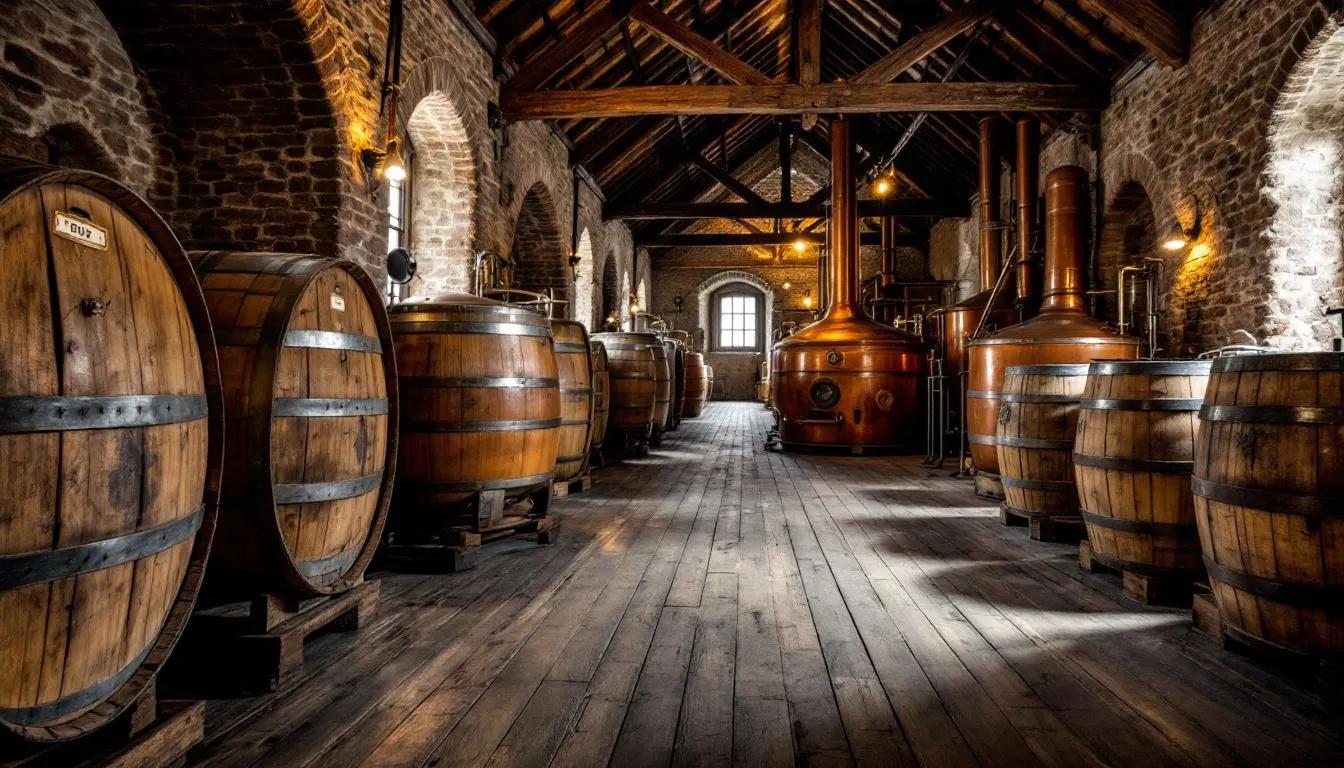
Leave a Reply